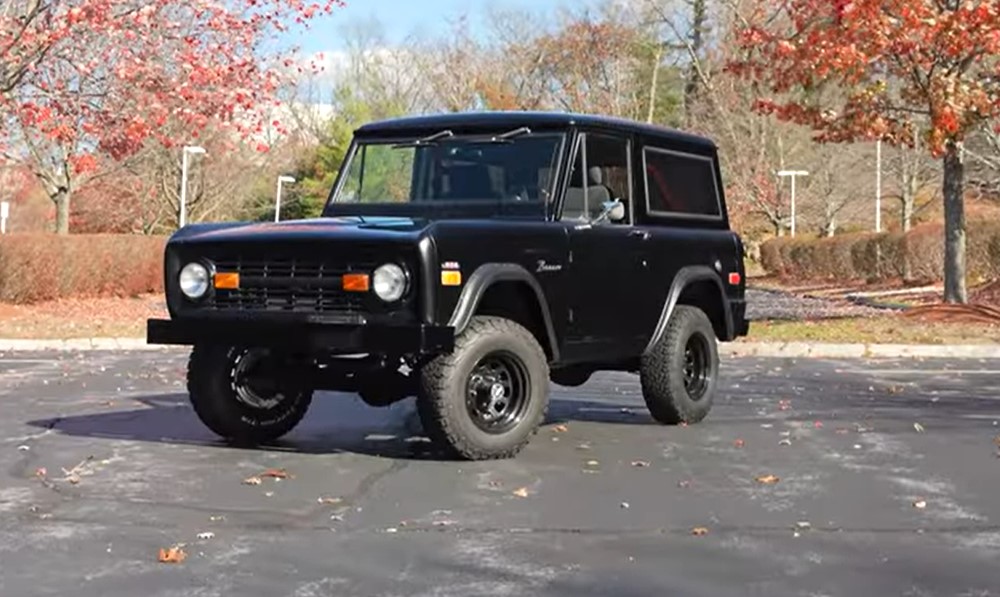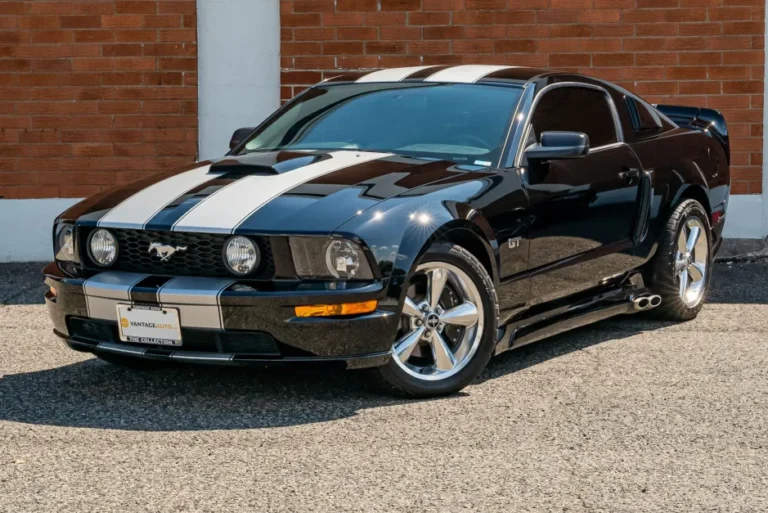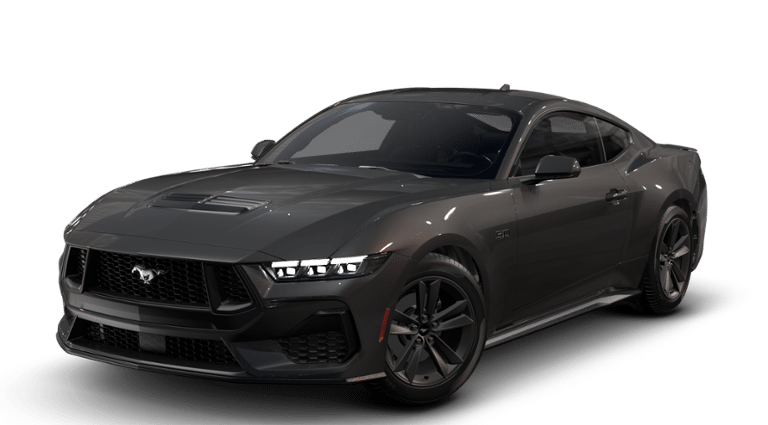The 1970 Ford Bronco is a classic SUV with a unique design and great off-road capabilities. With its teal, blue, green, red, orange, yellow, pink, and gunmetal grey color options, this vehicle appeals to vintage car enthusiasts who are also interested in customization and modification.
Furthermore, despite the varying price range due to regional factors, Broncos are considered an investment as they retain their value over time. Buyers can find them for sale at the Classic Ford Broncos, Hemmings, Autotrader Classics, and Biener Ford dealerships or customize their own using the Bronco Builder tool.
With all of these options, owning a 1970 Ford Bronco is a dream come true for many car collectors.
Determining The Value Of Your Classic Ford Bronco
The Ford Bronco 1970 is a classic car that attracts car enthusiasts worldwide. However, determining the value of your classic Ford Bronco is no easy feat. There are several factors that affect the price of a classic car such as the condition, history, and rarity of the vehicle.
Factors That Affect The Value Of A Classic Bronco
When it comes to determining the value of your classic Ford Bronco, there are several factors you should consider:
- The condition of the vehicle: The better the condition, the higher the value
- The originality of the vehicle: Original parts increase the value
- The rarity of the vehicle: Rare Broncos can fetch higher prices
- The history of the vehicle: Broncos with a unique or interesting history can be more valuable
- The modifications made to the vehicle: Customizations can either increase or decrease the value of the car
Where To Find Affordable Broncos For Sale
If you’re looking for an affordable classic Ford Bronco for sale, there are several places you can look. One option is to check out online marketplaces such as Hemmings, Autotrader Classics, and Classic Cars for Sale. Another option is to reach out to restoration experts like Maxlider Brothers Customs or Gateway Bronco who may have Broncos for sale in various conditions and price ranges.
It’s important to keep in mind that prices can vary greatly depending on the location of the vehicle. Broncos found in regions with low rust damage such as the Southern United States may be more expensive due to their better condition compared to Broncos found in northern regions with high rust damage. It’s essential to do your research and determine what factors are most important to you when it comes to purchasing a classic Ford Bronco.
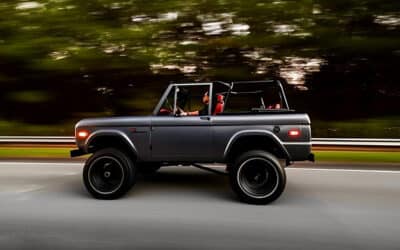
Credit: kincerchassis.com
Understanding The Restoration Process
Restoring a classic vehicle like the Ford Bronco 1970 requires a proper plan and approach to ensure that the project is executed efficiently. In this blog post, we will discuss the restoration process for the Ford Bronco 1970, focusing on how to inspect the vehicle and assess its condition, create a restoration plan, and gather the necessary tools and equipment for the project.
Inspecting The Vehicle And Assessing Its Condition
The first step in restoring a Ford Bronco 1970 is to inspect the vehicle and assess its condition. This process involves a thorough inspection of the interior and exterior of the vehicle to identify any damages or signs of wear and tear that might affect the restoration process.
Your inspection should focus on the following parts of the vehicle:
- Bodywork
- Engine and transmission
- Suspension and steering
- Brakes and tires
- Electrical systems
- Interior upholstery and trim
Once you have identified the areas that need attention, you can then develop a restoration plan.
Creating A Restoration Plan
Creating a restoration plan involves outlining the steps you need to take to restore the Ford Bronco 1970 to its original condition. This section should include a detailed breakdown of all the tasks involved in the restoration process and an estimated timeline for each task.
Some of the tasks that you might include in your plan include:
- Mechanical repairs and upgrades
- Bodywork and painting
- Interior restoration, such as replacing upholstery and carpets
- Electrical repairs and upgrades, such as installing new wiring and lights
- Replacing or upgrading tires, brakes, and suspension components
By creating a restoration plan, you can stay on track and ensure that you complete each task within the designated timeline and budget.
Gathering Necessary Tools And Equipment
The final step in the restoration process is to gather all the necessary tools and equipment needed to complete the tasks outlined in your restoration plan. This process should start with a full inventory of existing tools and identification of which you may need to add to complete the restoration.
Some of the tools and equipment that you might need include:
| Tool/Equipment | Purpose |
|---|---|
| Wrenches and sockets | To loosen and tighten nuts and bolts |
| Automotive jack and jack stands | To raise and support Bronco |
| Bodywork tools, hammers, and sanders | To repair and shape the bodywork |
| Painting equipment, masks, and protective gear | To repaint the vehicle |
| Upholstery and carpeting tools | To replace or repair the interior upholstery and carpets |
Ensuring that you have all the necessary tools and equipment required for the project can help to reduce delays and ensure that you complete the restoration efficiently.
With the above steps, you should be able to start restoring your Ford Bronco 1970. Remember, the restoration process takes time, effort, and patience – don’t rush it!
Body Restoration
The Ford Bronco 1970 is a classic vehicle that can be restored to its original condition through body restoration services. With proper restoration, the Bronco can be brought back to its prime and ready to hit the road once again.
Body Restoration:
Restoring the body of a classic car such as the Ford Bronco requires careful attention to detail, precision workmanship, and a love for the craft. The process can be broken down into three main stages, each requiring a particular set of skills and expertise. These are: removing rust and damage, replacing body panels and components, and preparing the body for paint. Let’s take a closer look at each of these stages.
Removing rust and damage:
One of the most common issues when restoring a classic Ford Bronco is rust. This is especially true for models that have been exposed to the elements and road salt over the years. To get rid of rust and restore the body back to its former glory, the first step is to remove any damaged sections. This may involve cutting out rusted areas and welding in new metal pieces to replace them. By doing this, the structural integrity of the car is preserved, and any potential safety hazards are eliminated.
Replacing body panels and components:
Another important aspect of body restoration is replacing damaged or worn body panels and components. Over time, parts such as fenders, doors, and hoods can become damaged due to rust, accidents, or general wear and tear. To restore the car to its original beauty, new components may be required. Fortunately, many aftermarket companies produce high-quality replacement parts that are specifically designed for classic Ford Broncos. This means that the restoration process can be done with faithful attention to detail and adherence to the original design.
Preparing the body for paint:
Once the rust and damaged parts have been removed and replaced, the final stage of body restoration is preparing the body for paint. This involves several steps, including sanding, priming, and painting. The aim of this stage is to achieve a smooth and even finish that not only looks good but also protects the car from further damage. After the paint has been applied, the body is polished to give it a final finish that gleams and shines.
In conclusion, body restoration is essential if you want to truly restore a classic Ford Bronco. By removing rust, replacing damaged components, and preparing the body for paint, you can restore a car to its former glory and enjoy the open road in a piece of automotive history.
Engine Restoration
Restoring a 1970 Ford Bronco engine is a great way to revive its performance and maintain its classic value. Proper restoration can improve its horsepower and minimize wear and tear, making it a better off-road vehicle.
Engine Restoration
The engine is the heart of any vehicle, and the Ford Bronco 1970 is no exception. Restoring the engine is a critical step in any restoration process, and it involves disassembling, repairing, or replacing worn-out parts and upgrading the system to improve performance. In this post, we will take a closer look at the engine restoration process for the Ford Bronco 1970, including disassembling, inspecting, repairing, and upgrading the engine. This will give you an idea of the work that goes into restoring a classic vehicle.
Disassembling and Inspecting the Engine
The first step in restoring the engine is to disassemble it and inspect the components. This process involves removing all the parts from the engine, such as the cylinders, pistons, and crankshaft. Once the engine is disassembled, each part is inspected for wear and damage. This inspection will determine which parts need to be repaired or replaced.
Repairing or Replacing Engine Components
After inspecting the parts, the next step is to repair or replace the worn-out components. This is where attention to detail is key. For instance, worn-out bearings need to be replaced, and damaged cylinder walls need to be re-bored. Similarly, worn-out pistons and connecting rods need to be replaced to restore engine efficiency.
Upgrading the Engine
Upgrading the engine is the final step in the restoration process. This step involves replacing old components with high-performance ones to improve the engine’s power and efficiency. For instance, replacing the old carburetor with a new fuel-injection system can enhance the engine’s performance, making it more powerful and efficient.
Conclusion
The engine is the heart of any vehicle, and restoring it is a critical step in the restoration process for the Ford Bronco 1970. Disassembling and inspecting the engine, repairing or replacing worn-out components, and upgrading the engine are all crucial steps in restoring the engine to its former glory. By following these steps, you can restore a classic Ford Bronco 1970 to its original performance, ensuring it remains both functional and valuable.
Interior Restoration
Revive the classic look of your 1970 Ford Bronco with interior restoration. Let the experts handle your car’s worn-out seats, carpets, dashboard, and other interior parts, and bring back its original beauty.
Interior Restoration
When it comes to restoring a classic vehicle like the Ford Bronco 1970, the interior restoration is as important as its engine and exterior. The interior restoration involves removing and replacing old upholstery and trim and upgrading the dashboard and electronics.
Removing and replacing old upholstery and trim:
The first step in the interior restoration process involves removing the old upholstery and trim. This can be a time-consuming process, but it is essential to ensure a clean slate for the new upholstery. Once the old upholstery is removed, the seats can be reupholstered with high-quality fabric or leather in a color that matches the exterior. This will give the Bronco a fresh look and feel, and will not be a distraction or an eyesore.
Upgrading the dashboard and electronics:
Upgrading the dashboard and electronics is a critical part of the interior restoration of a 1970 Ford Bronco. A modern stereo system with built-in Bluetooth and smartphone connectivity can be installed to upgrade the sound system. The dashboard can also be upgraded with new gauges, knobs, and switches. Installing modern electronics ensures the car has an up-to-date feel, while still keeping the classic look and feel of the original dashboard intact.
In conclusion, interior restoration is one of the essential components to upgrade and restore the Ford Bronco 1970. Upgrading features in the car ensures that the interior looks elegant and stylish, and will definitely catch the eyes of the onlookers.

Credit: www.cjponyparts.com
Off-road Upgrades
Upgrade your Ford Bronco 1970 for off-road adventures with custom modifications such as lifted suspensions, off-road tires, and skid plates. Install lockers, winches, and a roll cage for added safety and functionality.
Off-Road Upgrades:
When talking about the iconic Ford Bronco 1970, it’s impossible to ignore the off-road capabilities that have always been the defining feature of this classic vehicle. To ensure the best performance of your Bronco on rough terrains, upgrading the suspension and tires are essential.
Upgrading suspension and tires for off-road use:
To make the suspension of your Bronco 1970 suitable for off-road use, you can replace the stock suspension with a heavy-duty suspension kit. This upgrade will increase the ground clearance and provide better stability and handling on rough terrains. Additionally, installing larger tires, mainly all-terrain or mud-terrain tires, will give your Bronco the grip it needs to crawl over rocks, climb steep inclines and maneuver through muddy paths.
Adding winches and other accessories:
When you’re cruising on rough terrains, winches and other accessories come in handy in case you get stuck or need a pull. Winches can attach to the front or rear of your vehicle and help pull you out of tight spots. You can also add accessories like skid plates, brush guards, and rock sliders to protect your Bronco’s undercarriage and body from damage. An upgraded intake and exhaust system can also improve performance and reliability on off-road trails.
Upgrading your Ford Bronco 1970 with these off-road enhancements can transform your classic vehicle into the ultimate off-road machine. Whether you’re crawling over rocks or powering through mud, the Bronco’s iconic capabilities ensure you can take on any rough terrain with confidence.
Final Touches
The Ford Bronco 1970 is a classic car that demands attention. Before it can hit the road, the final touches need to be made to ensure everything is in place, ensuring every ride is a smooth and memorable one.
Final Touches
The final touches of any project are always exciting, and restoring a classic Ford Bronco is no exception. After countless hours of hard work and dedication, the vehicle starts to come together. Let’s take a look at the final touches of a 1970 Ford Bronco restoration.
Painting the Vehicle
One of the most crucial final touches is painting the vehicle. The paint job is the first thing people see and can make or break the appearance of the car. The 1970 Ford Bronco was available in various colors, such as light blue, green, red, and orange. The final paint job on the restored Bronco should be flawless, with no runs or uneven color.
Testing and Tuning the Restored Ford Bronco
Once the painting is complete, the car’s mechanical components need testing and tuning. The engine must run smoothly, and all systems must be checked. The restored Ford Bronco must be thoroughly tested and tuned on the road, ensuring that each component is functioning correctly.
Conclusion
The final touches of a Ford Bronco restoration are essential, adding the finishing touches to a beautiful classic car. With flawless paint and correctly functioning mechanical components, a restored 1970 Ford Bronco will turn heads as it drives down the road.
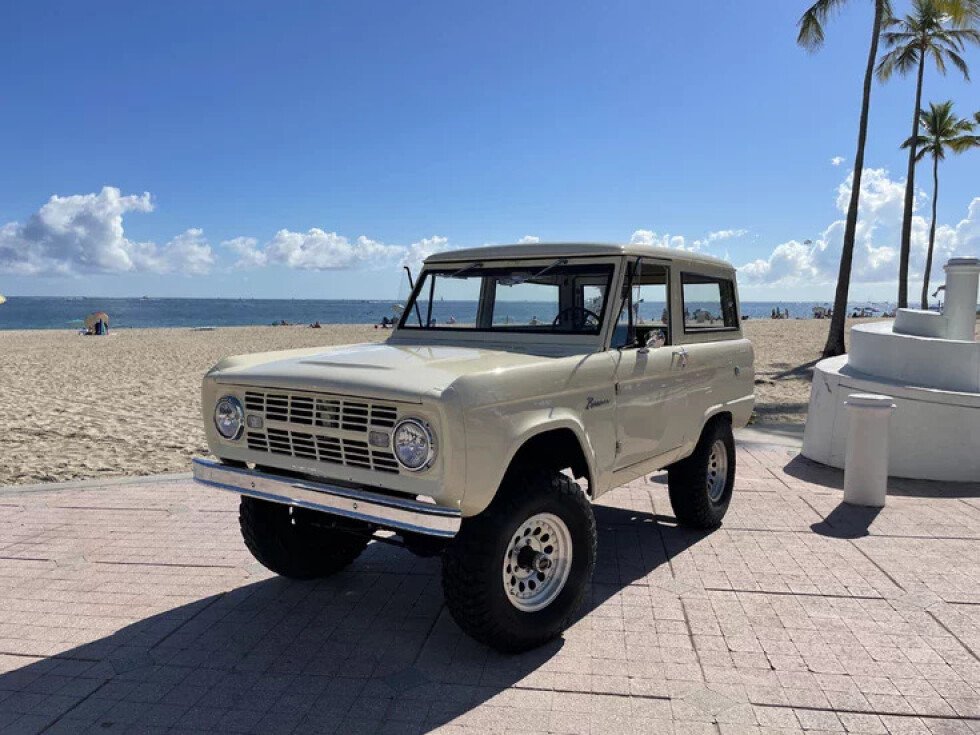
Credit: classics.autotrader.com
Frequently Asked Questions On Ford Bronco 1970
Why Are 1970s Broncos So Expensive?
1970s Broncos are expensive due to their high demand in the market, limited supply, and their popularity in pop culture. Buyers are willing to pay a premium for Broncos with less rust damage, and their vintage appeal, making them a collector’s item.
The value varies depending on location and condition, but Broncos in the Southern United States tend to be more expensive.
What Year Did The Bronco First Come Out?
The Bronco was first introduced in 1966.
How Much Was A Ford Bronco In 1983?
The Ford Bronco in 1983 was priced at around $9,000. However, prices may vary depending on the location.
What Is The Oldest Ford Bronco Model?
The oldest Ford Bronco model is the first generation one, which was introduced in 1966.
Conclusion
Owning a classic Ford Bronco is not just a simple hobby, it’s an investment that pays off over time. The timeless design and off-road capability of the 1970 model make it a sought-after collectible among car enthusiasts. The value of the Bronco varies based on the location and the condition it is sold in, with rust damage being a critical factor.
Therefore, it’s essential to do your homework before investing in a classic Ford Bronco. Regardless, the Bronco remains a timeless vehicle that’s incredibly fun to drive, versatile and still turns heads wherever you go.

